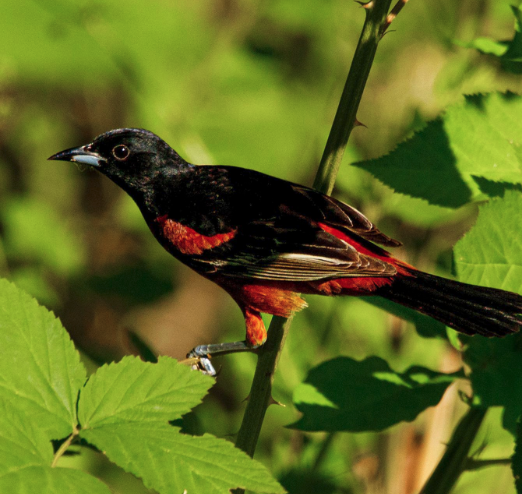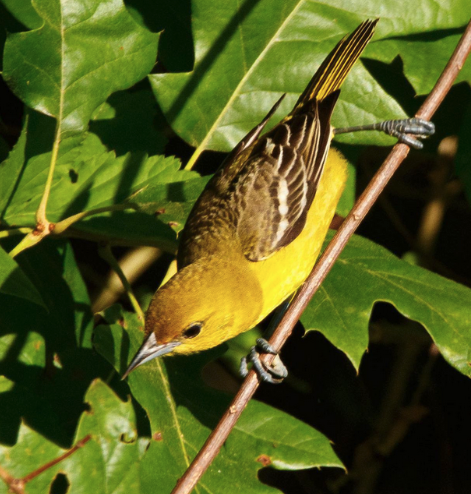-Sally Siko
Here’s are a couple juvenile Orchard Orioles I spotted while birding at Dorothea Dix Park in Raleigh, NC.
They were waiting patiently for their mother while she was hunting for insects in the grass nearby.
For the most part the two sat perfectly still, only moving occasionally to peck at an ant or two .Once she arrived with a snack, the two little ones would hop excitedly, mouth agape hoping to be the one to receive the food.




Sporting a striking combination of reddish orange and black plumage, Orchard Orioles are the smallest species in this family birds.
Though these little ones are a orange-ish yellow color, soon a black beard of feathers will grow in, running down their chests below their bills.
Orchard Orioles are summertime residents of North and may be found throughout the state through late August.They are often spotted in groves of trees in the middle or edges of fields (like this one) looking for a six or eight legged snack. Although they primarily dine on insects, they will also eat fruit and will even sip nectar from flowers or hummingbird feeders when available too! Aren’t they lovely?
Photos by @sally_siko of @bestlife_birding captured on my mighty mirrorless monster, the @canonusa #R5







